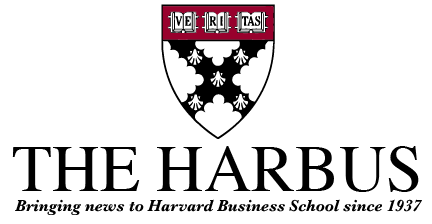Forty-two students converged in Israel on January 2, 2009 for the inaugural HBS Israel Immersion under the direction of Professor Dan Isenberg – uncertain of what to expect in the face of the ongoing Gaza operation. Perhaps because this conflict is decades-old, in this small country (approximately the size of New Jersey) day-to-day life continues unimpeded. More impressively, some Israelis even go as far as to credit “conflict” as a catalyst in cultivating a pervasive entrepreneurial spirit and fostering innovation.
It is nightfall and the travelers’ faces weary by the time we arrive in Jerusalem. “Shalom!” the tour guide greets us warmly at the entrance to the Mount Zion Hotel holding a tray laden with glasses of freshly squeezed orange juice. It is unseasonably chilly for this time of year, but once inside our exhaustion subsides, the juice reinvigorates us, and excited conversation ensues.
Later that night, at our first group dinner, we are introduced to a delectable array of local cuisine, much of which originated in other countries and was brought to Israel by immigrants. A seemingly endless stream of plates: hummus, Israeli salad, ptitim, pasta, fish, and various meats.
The next day is Saturday and as the first light of dawn, it becomes evident that the hotel is surrounded by a spectacular panorama: we spend the day exploring the Last Supper Room on Mount Zion and the 1,000-year-old olive trees in the Garden of Gethsemane, where Jesus is believed to have spent his last night praying before crucifixion. One common misconception is that crucifixion was a highly unusual death sentence; at this time in history, however, under Roman decree, over 300 people were being crucified per day.
I find myself lost in thought as we move on to the Western (Wailing) Wall – studying the slivers of paper that have been inscribed with prayers and slipped into every discernible crevice of the wall. People from all over the world come here searching for guidance, solace, and relief – including then Democratic presidential-hopeful, Barack Obama, who was in Israel in July and slipped a solitary prayer into the Wall.
Our guide mentions that even here, in Judaism’s holiest of places, someone dared to steal the sliver of paper containing Obama’s prayer: a plea for God to help him guard against pride and despair, and asking for the wisdom to do what is just and right. The image of the 47-year-old Obama at the Western Wall – which dates back to 70 AD – provides a fascinating snapshot of contemporary and ancient worlds colliding.
With the current conflict looming as a backdrop, a lesson about Israel’s compulsory military service program follows. In Israel, every man is required to serve for 3 years and every woman for 2 years following the completion of the 12th grade.
We visit the elite 8200 unit (Shmone Matayim). This top-secret, high-tech intelligence unit is thought of as a pipeline for the country’s flourishing entrepreneurship industry – the country as a whole is estimated to have between 2,000 and 3,000 start-ups. Numerous alumni have gone on to generate breakthrough technology in the IT arena. Today, the 8200 unit continues to be responsible for providing the early warning capabilities that safeguard the country from enemy aggression.
Ophir Kra-Oz, Co-Founder of IT Structures, explains that individuals are given an extraordinary amount of responsibility in 8200. “You might get a $2 million budget at 25 years old and be supervising 20 people.” In addition, people band together and work very hard in accomplishing something for the good of the nation, rather than for financial reasons; this contributes greatly to solidarity, and the alignment of efforts.
Our own military training is administered by Yuval Eilam, who trains high school students that are hoping to get a head start on their training regime or earn admittance into an elite unit. Decked out in matching gray t-shirts that read Discover Yourself, we are assigned to 6-man teams (3 HBS students, 3 Israeli students). Our first activity – led by high schoolers – is a camouflage exercise in which we must hide a single team member somewhere on a steep, sandy hillside dotted with sparse vegetation. The other teams will be given three minutes to comb the hillside – the objective is for our man to remain undiscovered. I note that if a few days earlier someone had told me I would find myself curled up in the fetal position at the bottom of a three-foot-deep sandy hole covered with rocks and shrubbery atop an Israeli hillside, I might have had some second thoughts about going on the IXP.
As the sun sinks below the horizon and the sky is transformed from a cloudless blue to a golden pink hue, we also find ourselves scaling the “Wall of Death” – a vertical wall of sand and rock, moving on to doing wind-sprints up and down sand-dunes, climbing a cargo net, and carrying a rock-laden stretcher (meant to represent an injured comrade) up a steep incline. A few hours later, I feel I can understand a little better the camaraderie and bond of solidarity that Israeli panelists have referred to as a result of the 2-3 years they spent serving their country.
That night, we make the transfer to Tel Aviv. After an eventful day (did I mention that I even have a battle scar inflicted from scaling the Wall of Death? A somewhat aesthetic crescent-shaped gash on my right knee), a scrumptious meal, and several glasses of red wine – we consider scoping out the famous Tel Aviv nightlife scene. Our tour guide has encouraged our aspirations: “Jerusalem prays; Tel Aviv plays.” The hotel turns out to be located adjacent to a thick stretch of beach – in close proximity to both a number of bars and clubs, so we decide to down a Red Bull, dial up an Israeli sectionmate, and check out a few. I am amazed to discover that Tel Aviv clubs are just starting to warm up when most New York City clubs would be closing down for the night. Not to mention that people are out on a Sunday night! We stay out ’til 3 a.m. soaking up the atmosphere and the great music.
In the days that unfold, many opportunities to observe innovation in action arise. On a visit to a kibbutz (meaning “collective” or “gathering”), our group explores an Agritech Incubator. We learn about research being carried out to test the potential of using algae as a source of alternative energy. The Incubator is also experimenting with water conservation practices: using the same water to irrigate plants and to raise fish. Since the plants float in pots on the surface of the water, the fish waste naturally cycles through to fertilize the plants.
We move on, travelling toward the shore. Standing high in the stands of the amphitheater in Caesarea, the port city associated with Herod the Great, I try to imagine the roar of the crowd as gladiators would have battled below in ancient times. I am fascinated by the grandeur of his vision for the city and his unyielding determination in seeing it realized. Overhead, flocks of migrating birds fly on in perfect V-formations. Children play in the collection of tide pools on shore – examining the contents of each microcosm. I observe that learning here has a more hands-on feel to it.
Delighted with my newfound stretch of beach, I start slipping out early in the morning to run on the sand and to admire the expanse of blue water and waves. It is interesting that despite the fact that the Israel domestic market is so small the country has also been successful at attracting large multinational corporations such as Microsoft and Google to its shores.
Such companies come to Israel because of the access to talent and substantial reserves of human capital; the vast majority of the research and development (R&D) these individuals conduct remains focused on serving foreign markets, such as the United States or Europe.
In addition, personnel from these companies say that Israelis are constantly generating new ideas, facing challenges head-on, and experimenting – all of these factors contribute in creating an atmosphere optimal for innovation. They call it Israeli hutzpa (a kind of “conquer the world” audacity) at work.
By and large, the majority of Israeli R&D and start-up ventures appear to be focused on the high-tech arena. On one of our final days in Tel Aviv, we are broken up into three-man teams and sent out to research different start-up ventures. My team is assigned to WIX.com, an early stage website-building start-up that targets artists, musicians, photographers and small businesses interested in displaying visual content online.
We spend the day in the bright sunlight on the office rooftop, sipping espresso and discussing the company’s platform with founder and serial entrepreneur, Avishai Abrahami. Abrahami, who started developing software at the age of 12, describes start-ups as “just something I do. It has nothing to do with money.”
By the time Abrahami was 23 he was supervising a staff of 30 people at his first start-up venture. WIX.com is his fourth start-up, and the passion for what he does has not been dampened by the years; Abrahami usually stays online until 5 a.m. even when the team is not operating under a pressing time constraint.
Whether meeting with individuals such as Abrahami or Prize4Life founder, Avichai Kremer (HBS ’06), I was struck by the passion and conviction of the entrepreneurs we encountered. Kremer, who was diagnosed with ALS (Lou Gehrig’s disease) in 2004, demonstrated grace and good humor in delivering dinner commentary to our group; despite the debilitating effects of his diagnosis, Kremer’s demeanor betrays no sense of self-pity. Because he is no longer able to speak or type, he communicates by utilizing a laser in his forehead that he directs at a keyboard; the letters are then projected up onto a screen. When he smiles, his face lights up with such joy that it is impossible not to smile in return.
Then, there is Dr. Nahum Sharfman, founder of Shopping.com, which was acquired by eBay for $650 million. A Ph.D. in High Energy Nuclear Physics, Sharfman credits his academic background with equipping him with the ability to problem solve, and to crack open a textbook and expand his knowledge base on whatever topic is necessary for his latest undertaking.
Others, such as Eitan Wertheimer, also dazzle us. I guess this should not be much of a surprise considering Wertheimer also purportedly dazzled Warren Buffett. Buffett was so impressed with what he heard about Wertheimer’s Iscar Metalworking that he paid $4 billion to obtain a controlling interest in 2006 without even visiting the company’s headquarters.
At the time Buffett said, “We have seen thousands of businesses over the years, but we have never seen a company that we admire more than Iscar. It’s a remarkable achievement, a combination of brains, talent and imagination.”
The secret to Iscar’s success? Wertheimer says, “I just tried to apply what I learned in the Benihana case to the metalworking industry.”
At best, I feel that this article only briefly brushes the surface. There is so much more: how can you possibly encapsulate the weightless sensation of floating on the Dead Sea on a piece of paper? A final fiery sunset? The bright full moon suspended over the Tel Aviv skyline? A solitary Bedouin leading his camel over the desert sands? I will leave these items to your imagination. After all, imagination is where it all – entrepreneurship and innovation, that is – begins.
Kay Fukunaga was born and raised on three islands in Hawaii: Oahu, Molokai, and Maui. Fascinated by the diversity of landscapes depicted in the Biblical Old Testament, she visited Israel as a young girl. This was her second trip.

